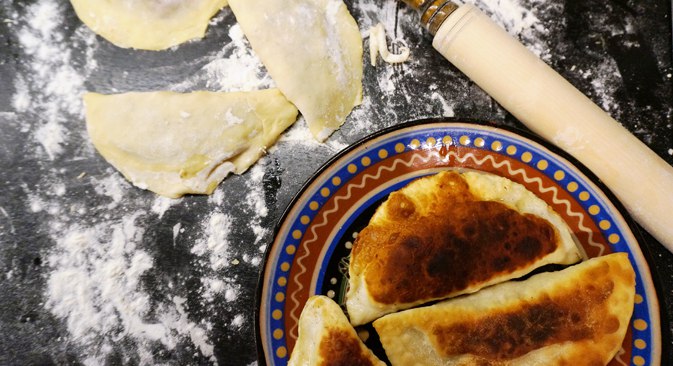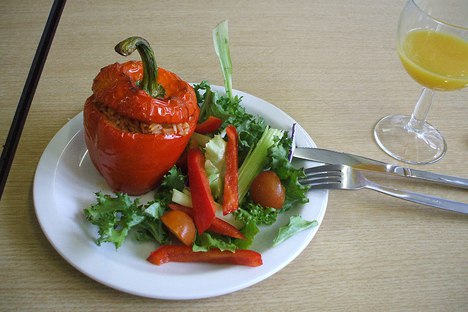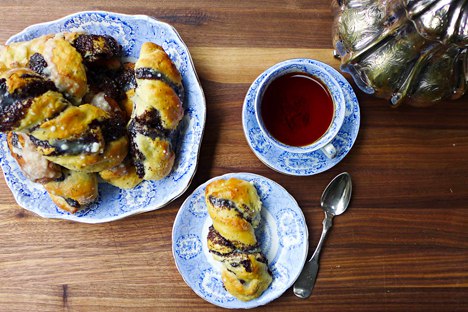The Russian Kitchen
Our chat: https://t.me/ruskitchen_chat
Community chat: https://t.me/hamster_kombat_chat_2
Website: https://hamster.network
Twitter: x.com/hamster_kombat
YouTube: https://www.youtube.com/@HamsterKombat_Official
Bot: https://t.me/hamster_kombat_bot
Last updated 8 months, 2 weeks ago
Your easy, fun crypto trading app for buying and trading any crypto on the market.
📱 App: @Blum
🤖 Trading Bot: @BlumCryptoTradingBot
🆘 Help: @BlumSupport
💬 Chat: @BlumCrypto_Chat
Last updated 1 year, 2 months ago
Turn your endless taps into a financial tool.
Join @tapswap_bot
Collaboration - @taping_Guru
Last updated 9 months ago

The fried meat pastries that make the perfect late-late night snack require an ingredient modern cooks find less than appealing.
https://www.russiaislove.com/arts/2015/01/30/the_lard_makes_the_cheburek_43299.html

Feb. 20-26 is Maslenitsa week in Russia. A mix of Orthodox and pagan Slavic traditions, this week marks the farewell to winter and the beginning of Great Lenten fast, which lasts for 40 days. It is a time for having lots of fun and, most importantly, eating plenty of bliny, Russian pancakes. RBTH has published many recipes for these pancakes and explained how pancake week is celebrated in many countries, so now we would like to share an extract from Igor Klekh’s book Adventures in the Slavic Kitchen, published by Glagoslav in 2016.
https://www.russiaislove.com/literature/cuisine/2017/02/22/maslenitsa-slavic-kitchen_707926
The first surviving reference to Russian cuisine was made by the 10th-century Arab historian, astronomer and geographer Ibn Rustah. According to Rustah, the eastern Slavs lived entirely on mare’s milk. Even today, I still read, in a glossy magazine, outlandish claims about the Russian soup okroshka, that it is made from a mixture of beer and vodka, and that Russian borscht is served rotten.
The cuisine of any nation is defined by the countryside. Russia may be enormous, but its soil is not rich, and the harsh climate means that for most of the year it cannot be cultivated. But Russia’s plentiful forests, deciduous and the coniferous taiga, were always able to provide enough fuel for the national form of heating – the Russian stove. The stove has an extremely low coefficient of efficiency – no more than 30pc – and the interior of the stove is big enough to allow a grown person to climb inside (and have a wash, a rural tradition). To get the internal temperature high enough to bake bread requires at least 10 logs – ie, a small tree. But once the oven has heated up, several dishes can be cooked slowly at the same time, and enough bread and pies baked to feed a large family. Historically, Russian cooking was not done on an open fire: rather, its dishes were “stewed” in the oven for several hours without any fat or oil being added.
The most famous and popular Russian soup is undoubtedly shchi, the cabbage soup, a dish foreigners find hard to understand. Rome’s ambassador to Moscow in the 17th century wrote: “If they want to hold a sumptuous feast, they make a soup out of food and a few cabbage leaves. If this dish turns out to be not to their taste, they pour a lot of sour milk into it.” There are actually many variations of shchi, and our national love of soup means that there are many recipes for them: a 19th-century cookery book offers 115, including soups made from bread and wine, cherries and buckwheat.
Fermented cabbage, full of vitamins and easy to store, was the main Russian vegetable in winter and spring. Onions and garlic have always been a staple, but green salad never flourished.
Salting vegetables and mushrooms using natural sour milk fermentation, also known as souring, is a major part of Russian cuisine. A pickle made from salted cucumbers and cabbage was once central to our national cooking. Apart from shchi, these pickled foods are used to make dishes such as solyanka, rassolnik and kalya. At one time ducks and geese were salted in large quantities, and also fish: the Domostroy, a 16th-century literary treasure-trove of household advice, mentions more than 10 ways of salting fish. And, of course, there is the famous Russian black caviar.
Fish is used to bake special pies which are known only in Russia – kulebyaka, rybnik and rasstegay. We have a saying: “You can make a pie out of anything.” There are open ones, nipped ones, vatrushkas filled with cottage cheese, sweet ones, sour ones and salted ones. And no article on Russian food would be complete without a mention of the popular okroshka and botvinya, both cold soups based on bread kvass, a national drink made from malt or flour. Again, okroshka is something you need to get used to, to have eaten it as a child, prepared using kvass made by your grandmother. As 19th-century French writer Théophile Gautier put it: “After several months in Russia, in the end you get used to cucumbers, kvass and shchi, the national Russian cuisine, and you begin to like it.”
Maxim Syrnikov is the author of several books on Russian cuisine.

This delight was born in medieval Rus, widely produced in the Soviet Union, and truly loved in modern Russia. What makes zephyr so special that everyone who tries it falls in love with it forever?

Different regions of Russia have their own recipes for ‘kokurki’; for example, in the Volga region people bake them with boiled eggs left over after Easter. Volgan ‘kokurki’ turn out to be hearty and delicious.
https://www.russiaislove.com/russian-kitchen/336070-kokurki-russian-pies-easter-eggs-recipe-photo

Master a modern way of cooking this delicious old Slavic dessert.
https://www.russiaislove.com/russian-kitchen/332678-fried-apricot-varenye-jam-recipe

On the day of St. Gregory Palamas, take the time needed to bake stuffed peppers to say a prayer.
https://www.russiaislove.com/blogs/2015/03/08/a_greek_dish_for_a_bishop_of_greece_44301.html

The use of poppy seeds is a prominent feature of baking in countries all over Central and Eastern Europe, from the Czech Republic all the way to Russia. For Jennifer Eremeeva, poppy seed rolls play an almost Proustian part in her memories of St. Petersburg, and after a recent chance encounter that brought it all back, she decided to try making some for herself.
https://www.russiaislove.com/arts/2014/12/17/poppy_seed_twists_remembering_things_past_42337.html

The town of Biysk is also aiming to host the Siberian Pelmeni Games.
Community chat: https://t.me/hamster_kombat_chat_2
Website: https://hamster.network
Twitter: x.com/hamster_kombat
YouTube: https://www.youtube.com/@HamsterKombat_Official
Bot: https://t.me/hamster_kombat_bot
Last updated 8 months, 2 weeks ago
Your easy, fun crypto trading app for buying and trading any crypto on the market.
📱 App: @Blum
🤖 Trading Bot: @BlumCryptoTradingBot
🆘 Help: @BlumSupport
💬 Chat: @BlumCrypto_Chat
Last updated 1 year, 2 months ago
Turn your endless taps into a financial tool.
Join @tapswap_bot
Collaboration - @taping_Guru
Last updated 9 months ago